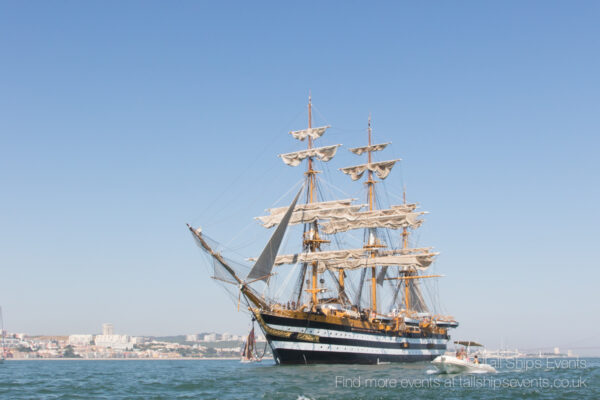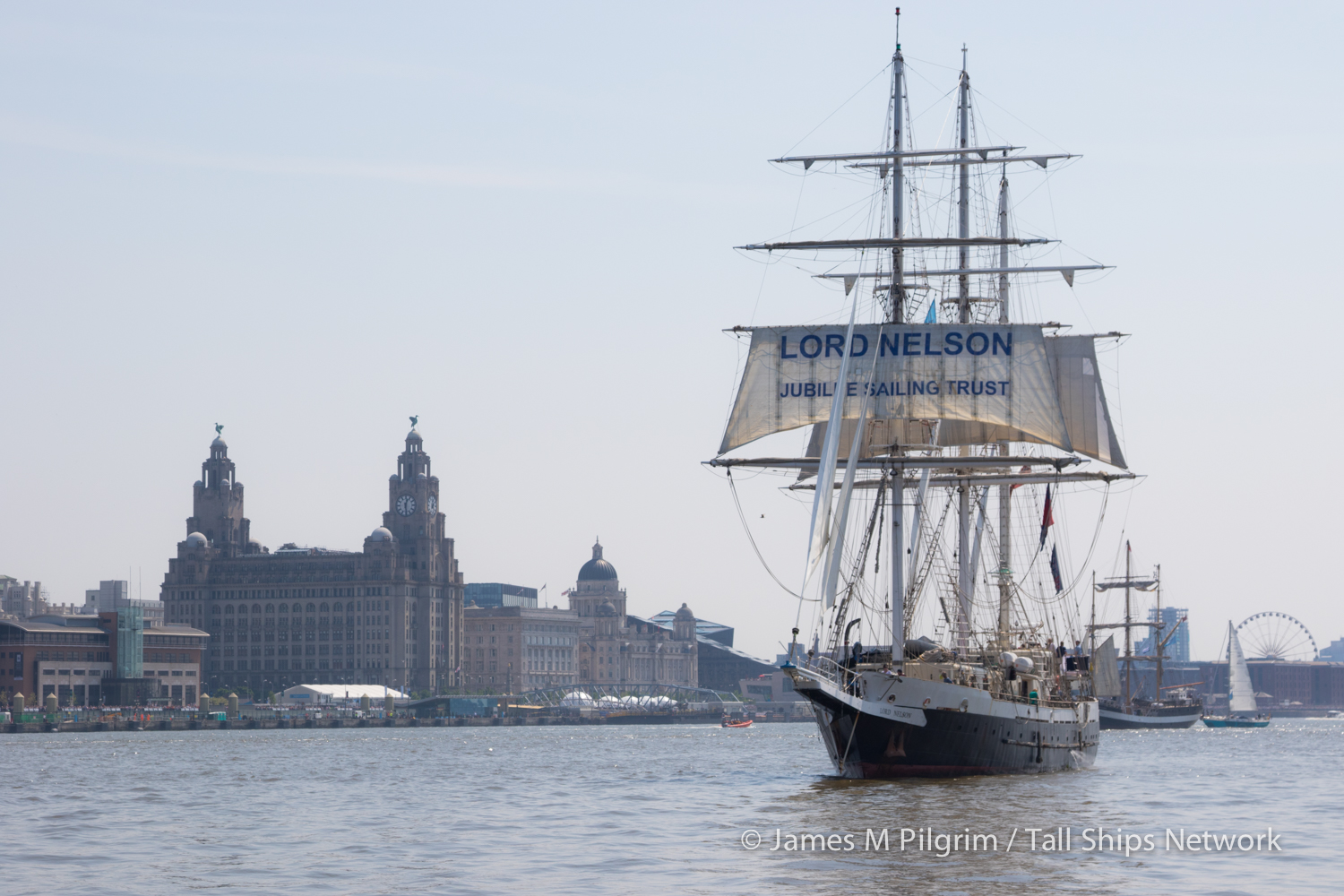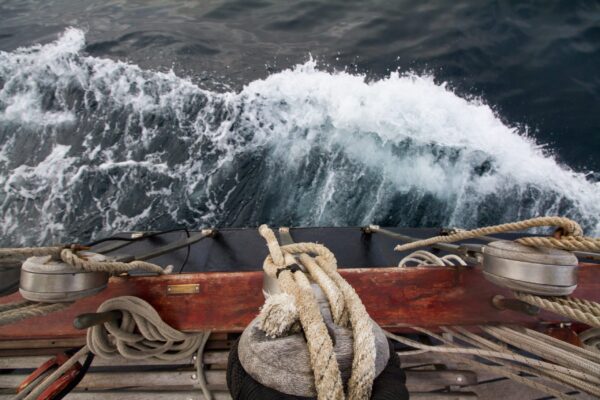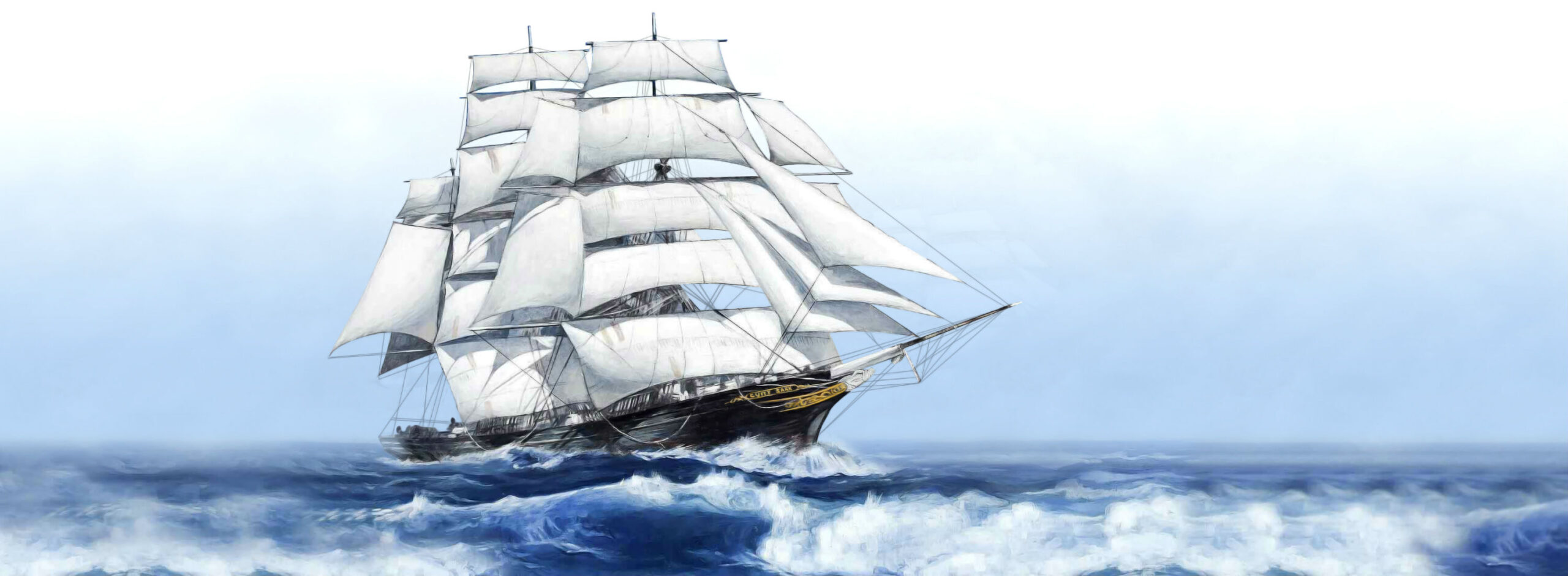
Our Country Needs a National Tall Ship, Not a Superyacht
An Open Letter to the UK Government
Download as PDF
Write to your MP
With a hold packed to the brim with British products, the UK’s national flagship ‒ a vessel powered by the wind and by the latest in green technology ‒ is promoting all things British in port cities across the globe. This is a tall ship like no other: a living, breathing celebration of British cultural heritage, a spectacular representation of the UK’s leadership in combatting climate change and a vessel platforming the UK to millions of people across the world every year whilst developing the future leaders of our country, our maritime workforce and our Navy.
Or, it could just be a superyacht.
Our ambition is for something special, not just a cutting-edge ship, but a truly national flagship
Defence Secretary Ben Wallace1
In May 2021 the UK Government announced they will be commissioning a new national flagship. Defence Secretary Ben Wallace described his vision for the vessel as “a floating embassy to promote the UK’s diplomatic and trading interests in coastal capitals around the world: hosting high level negotiations, trade shows, summits and other diplomatic talks”. The vessel, he said, would be the “greenest of its kind in the world”, both “environmentally and ecologically advanced [whilst] maximising the use of sustainable fuels and materials”.2
Now, you already know where my argument is heading, so let’s start with the basics.
Image is Everything
It goes without saying that images speak louder than words, so if this new vessel happens to look anything like the renderings we’ve seen so far it won’t matter how environmentally friendly it is: no part of the appearance of the vessel will speak to its environmental credentials. The Prime Minister said our new flagship will be “a clear and powerful symbol of our commitment to be an active player on the world stage”, but I suspect most people will see nothing more than a superyacht, an excessive purchase and a pompous statement by the UK government.
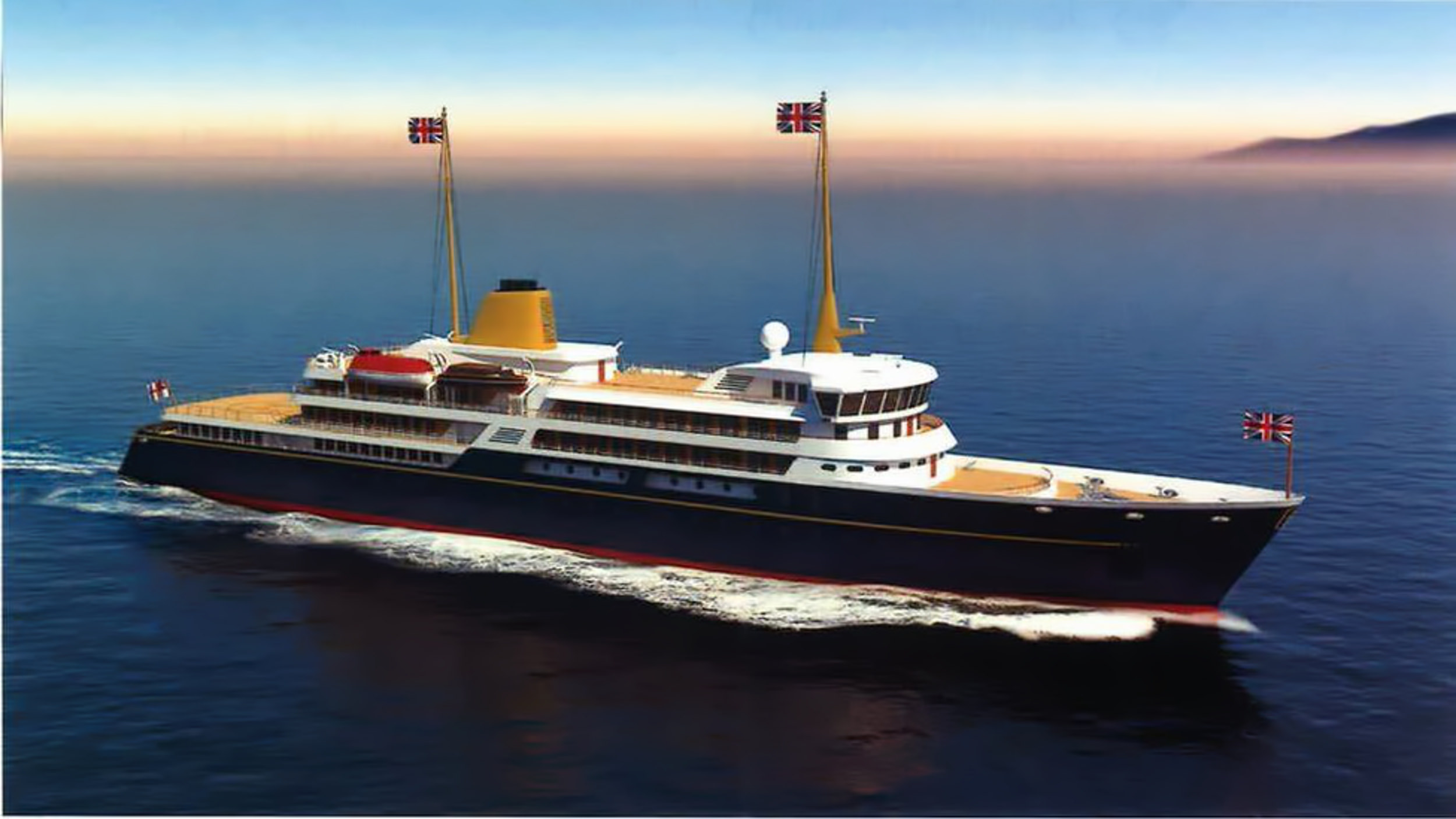 Mockup via Downing Street
Mockup via Downing Street
In October 2020, our government announced that “offshore wind will produce more than enough electricity to power every home in the country by 2030”, with Business and Energy Secretary Alok Sharma even saying “the offshore wind sector is a major British success story”. The government will no doubt be highlighting this at COP26 (the upcoming UN Climate Change Conference) in just a few months time, platforming themselves as leaders in tacking the global climate crisis while building a national flagship that could, but likely won’t, utilise the power of offshore wind to travel the world.3
But Aren’t Traditional Sailing Ships Outdated?
Short answer? No.
The shipping industry is seeing a strong resurgence in utilising the power of the wind, combining cutting edge technologies with those learnt over thousands of years. A prime example of this can be seen in the transport commitment that Michelin Group recently signed with NEOLINE, whose 136m long cargo ships rely on 4,200 square metres of sail as their main propulsion system, cutting CO2 emissions for transatlantic transport by up to 90%. A single NEOLINE cargo ship will be capable of transporting up to 500 cars.4
At the same time, modern technologies are being used to make traditionally rigged sail powered vessels even more environmentally friendly. The 85 metre three‒masted Norwegian barque Statsraad Lehmkuhl now features a hybrid propulsion system developed by Rolls‒Royce, enabling her to get underway and operate shipboard systems from battery power alone. Using the ships propellors as turbines when they’re not operating is just one example of where her new power system can source its charge.5
To give you some measure of sustainability, the tall ship Statsraad Lehmkuhl has now been in service for over 107 years, and in just a few weeks time she’ll begin a 55,000 mile, 20 month journey around the world, visiting 36 ports as a part of the United Nations Decade of Ocean Science for Sustainable Development. Our government expects the UK’s new flagship to be in service for just 30 years, after which she’ll likely become a tourist attraction whilst yet another ‘flagship’ is built at an even higher cost.
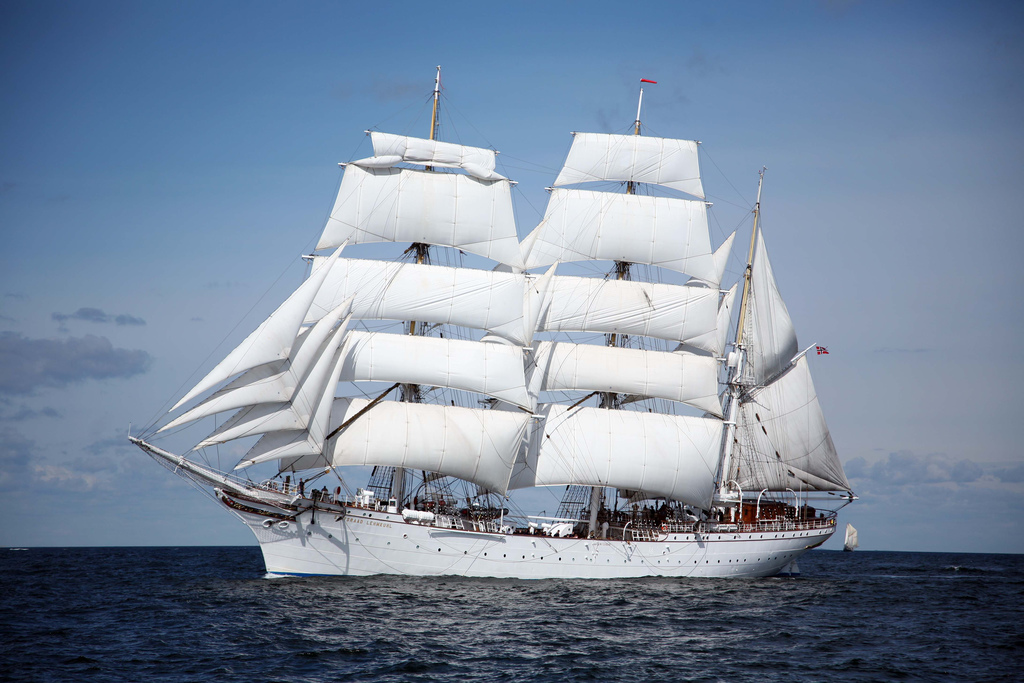 Statsraad Lehmkuhl 1
Statsraad Lehmkuhl 1
Building a vessel capable of remaining in service for over 100 years should be the most basic of criteria for our nation’s flagship, enabling the vessel to actively serve the community as more than just a tourist attraction once the government decide they no longer need her for trade.
Showcasing the Best of British
If we’re hoping to promote Britain to the world, let’s start by having a national flagship attend international events in the same way so many other other nations already do. Many tall ship festivals attract up to 1 million visitors within the space of a week and you won’t find a superyacht at any of them (not even a superyacht with sails).
I learnt about Peruvian produce when BAP Unión visited Canary Wharf, I learnt the history of the Romanian Navy when NS Mircea visited Southampton, I experienced the beauty of Omani design when Shabab Oman II visited Portsmouth and, more than anything, I have experienced the hospitality of those and so many other nations when visiting their national tall ships at festivals and open days all around the world.
During her fourth world tour, the tall ship Shabab Oman II visited 17 ports in 12 countries and welcomed over 211,000 visitors6. 40,000 of those people stepped aboard during just 3 days of the French maritime festival L’Armada Rouen7. The UK does not host any maritime festivals of this scale, nor do we have a national flagship representing our nation at any of the worlds largest maritime events. The most recent edition of SAIL Amsterdam attracted over 1.5 million visitors with national tall ships from all corners of the world attending to represent their nations during just 5 days of festivities.
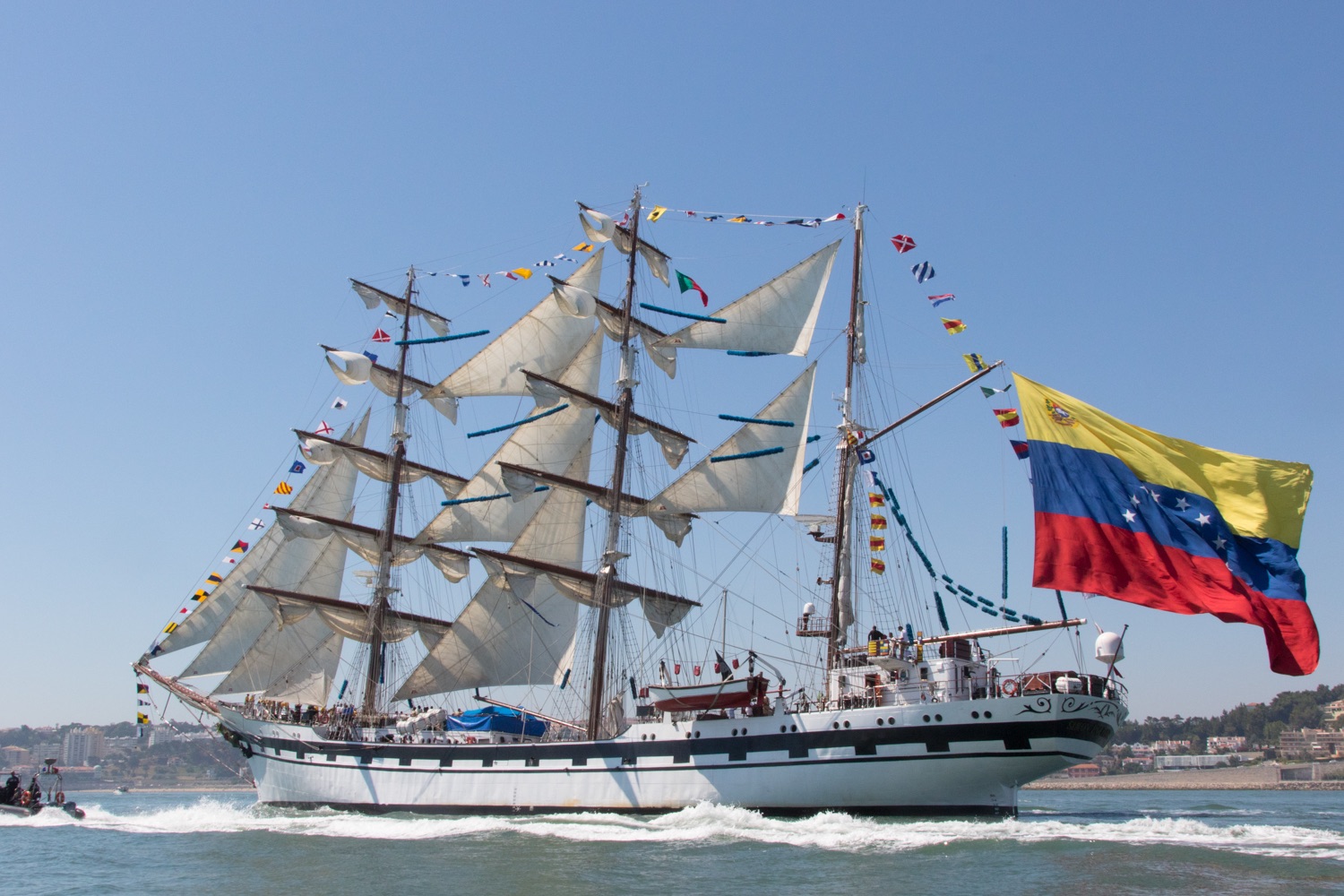 Simón Bolívar representing Venezuela at The Tall Ships Races Lisbon 2016 2
Simón Bolívar representing Venezuela at The Tall Ships Races Lisbon 2016 2
These vessels stand out because they all present themselves as accessible, approachable ambassadors for their nations and I stand firmly in believing a superyacht would not project the same image for ours. A national tall ship would be a spectacular floating embassy for our nation and with a vessel exceeding 100 metres in length we only need to apply a little bit of that “British design expertise” the government speaks of to be capable of accommodating trade shows, conferences and more onboard.
A Flagship to be Proud of
The UK Government said that the building of a national flagship will “reinvigorate the UK shipbuilding industry” and increase British trade around the world, but it could do so much more than that. This vessel should be a source of national pride.
To reinvigorate an industry and capture the pride of a nation you surely need to ignite passion, so lets reignite the kind of passion that saw a once scuttled SS Great Britain towed 8,000 miles home to Bristol to undergo restoration, the kind of passion that found £50 million to restore the Cutty Sark or the kind of passion that saw over 1,500 volunteers come together construct SV Tenacious, the largest wooden ship built in the UK for over 100 years.
“The SS Great Britain was the world’s first iron-hulled screw-driven ocean liner” 8, “Cutty Sark was designed and built, from top to bottom, to win the tea races” 9 and “SV Tenacious is currently the only sea-going tall ship in the world that can be sailed by a mixed ability crew, including disabled people” 10.
Britain has many ‘firsts’ when it comes to shipbuilding and our new flagship should be no different: we should be celebrating the best of our past, our present and our future.
To give you some measure of national interest, the BBC reported that over 100,000 people once lined the banks of the River Avon to welcome home “one of the jewels of Britain’s maritime history”, a “dark, rusting hulk” so significant that the Duke of Edinburgh was onboard. Now fully restored, the SS Great Britain attracts over 150,000 visitors per year to the same dock where she was originally built.8
Developing our Future Leaders
In 2013, Oman launched Shabab Oman II; in 2014, Peru launched BAP Unión;in 2016, China launched Polang and in 2019, Algeria launched El‐Mellah. These nations joined countless others from around the world who operate tall ships as a part of their naval fleets, some of which have been in service for over 80 years. These vessels are in no way designed to operate in modern warfare conditions, so why are they still being built?
The answer is simple: the level of competency that can be developed aboard a tall ship is higher than that which can be achieved aboard any modern day, computerised vessel. Everything is manual, you’re entirely dependant on the forces of nature and your ability to work within a team is critical. This is just one of the reasons many nations use these vessels for training their future naval officers, it’s the same reason every cadet who attends the US Coast Guard Academy will spend a at least six weeks on board the 85 year old barque Eagle and it’s the same reason that so many youth organisations around the world operate tall ships too. This experience is known as Sail Training.
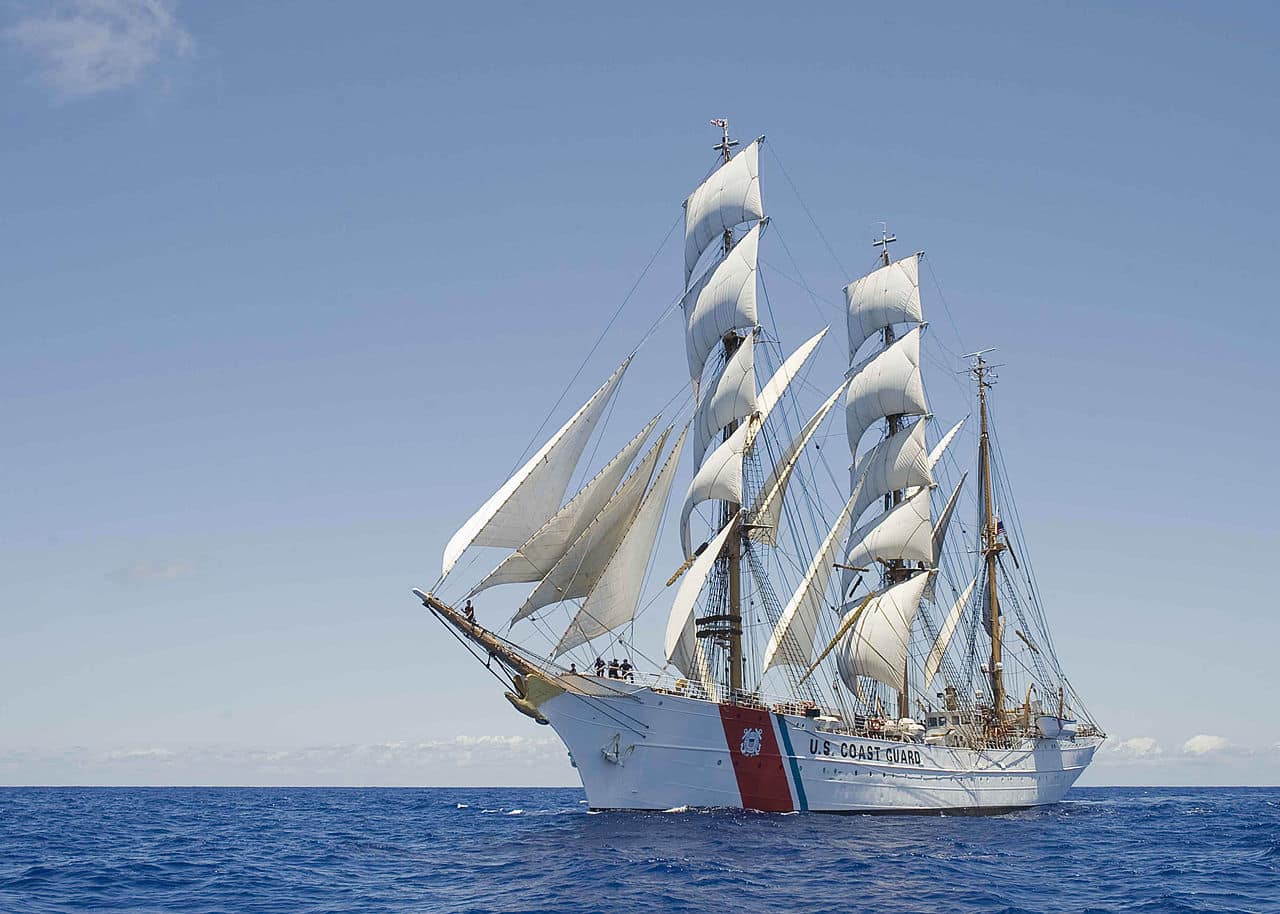 United States Coast Guard Barque Eagle 3
United States Coast Guard Barque Eagle 3
With the exception of a military situation, Sail Training is the most demanding of tasks associated with the sea ‐ it is also the most rewarding. It requires of its officers the continual practice of a high standard of seamanship; unlimited resources of patience, understanding and tolerance, the upmost reliability and integrity, a sense of humour ‐ but, above all, the mental resolve and physical strength capable of pure, unadulterated bloody hard work!
From an address by HRH Prince Philip to the Sail Training Association, for which he was Patron12
Given the name, it would be easy to assume that Sail Training is only good for developing maritime employability, but thanks to the Liverpool based charity MAST11, organisations such as United Utilities, Sellafield and even Bentley have proven otherwise. These companies have joined many others like them in using the power of Sail Training to develop key competencies in their apprentices. Those apprentices will likely never board a vessel of any kind as a part of their job roles, but every single one of them will apply the essential personal and professional skills they learnt during their Sail Training experience to push themselves even further within their respective companies as a result.
Proven Value
Recent research on the outcomes of Sail Training, conductedby the ASTO (UK Sail Training), found that:
- 88% of participants had improved self‐control and discipline;
- 89% of participants had greater resilience and improved communication skills;
- 90% of participants saw an improvement in their wellbeing and confidence; and,
- 91% of participants walked away with greater aspirations and motivation.13
Earlier this year, for the first time in decades, the Royal Navy recognised the value of Sail Training by sending their junior cadets aboard SV Tenacious to pick up key leadership skills. This however, was simply “to plug the gap left by the closure of the Navy’s command and leadership school in the Brecon Beacons due to the pandemic”, but with a new flagship on the way we’re now faced with the best opportunity in years at having a tall ship join our naval fleet.14
In 1988, the UK government commissioned the Sail Training vessel Young Endeavour, a vessel both designed and constructed in the UK as a gift to Australia to mark the Bicentenary. Since then the Young Endeavour Youth Scheme has changed the lives of almost 14,000 young Australians.
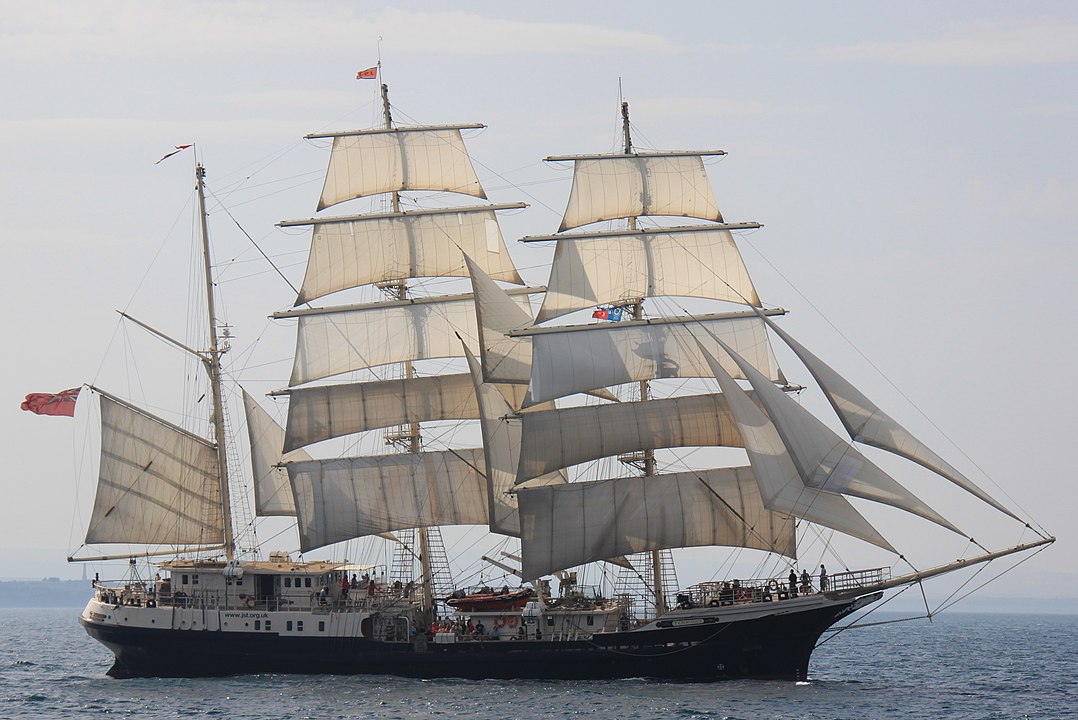 SV Tenacious 4
SV Tenacious 4
In 2014, the Marine Society & Sea Cadets (MSSC) launched Royalist, a tall ship whose predecessor helped change the lives of over 30,000 young people over 4 decades of service. Despite the exceptional value that the latest Royalist promised to deliver to the UK’s naval and maritime workforce, it took MSSC two years to raise the £4.8 million required to build the vessel, with hundreds of thousands of pounds in donations coming from foreign organisations such as The TK Foundation. The cost to build TS Royalist in the UK would have been so high that the contract for construction was awarded to a Spanish shipyard, with around 55% of the equipment onboard being UK sourced.
During his Engagement speech for the UK’s new flagship, the Defence Secretary recognised the immeasurable value delivered by the Cutty Sark through design, through trade and through Sail Training, describing her as “one of the most innovative vessels of her age”, “built in Scotland before sailing the world to facilitate global trade, then training future sailors and ultimately becoming an internationally recognised icon of British maritime history”. That’s our benchmark, a vessel capable of showcasing Britain on the global stage whilst developing the next generation of our workforce, a vessel that fuses the beauty and the speed of her predecessor with cutting edge green technologies, a truly spectacular reimagining of the original Cutty Sark.
This is the level of value that not even a sail‒driven superyacht could deliver: a superyacht may look impressive and it may even provide a welcome boost to our shipbuilding industry, but a national tall ship for the UK would be unforgettable, and it would boost an entire generation.
So What Would Better Serve Our Nation?
£100 million could deliver the flagship: a tall ship over 100 metres in length capable of training over 150 naval officers and cadets at any one time, a spectacular floating embassy capable of hosting conferences, trade fairs and high level negotiations in beautiful lounges onboard wherever the Prime Minister may go. Or, thanks to the Cutty Sark 2Sail Foundation, we could even bring a replica of the Cutty Sark to life to serve this role for less than half the price.
£80 million could deliver a tall ship of up to 80 metres built by the community, a ship named Prince Philip dedicated to the development of young people across the UK. With a certified Sail Training programme being delivered to thousands of young people every year, a voyage aboard the tall ship Prince Philip will form an essential part of the Duke of Edinburgh Award Scheme, boosting employability across the UK for many decades to come. Prince Philip will represent our nation at many major international events while continuing to regularly circumnavigate the UK. In every British town she visits, Prince Philip will become an in‐port education centre, delivering over 100 days of certified classroom programmes throughout the year focussed on marine life and the wider issues of climate change to local students of all ages, educating and inspiring our future mariners, biologists and more.
To help achieve our goal of carbon neutral trade, less than £20 million could bring home the 143 year old, 85 metre Falls of Clyde, enabling her to be restored so she can offer emission free cargo services from Scotland to the world once again.
Less than £10 million could save and restore the worlds first fully accessible tall ship STS Lord Nelson, British designed, British built and currently at risk of being scrapped or sold abroad. That money would ensure STS Lord Nelson delivers a valuable Sail Training programme for those with disabilities for many years to come.
And we’ll still have £40 million to spare, an amount capable of sustaining the operational costs of those community programmes for the next decade.
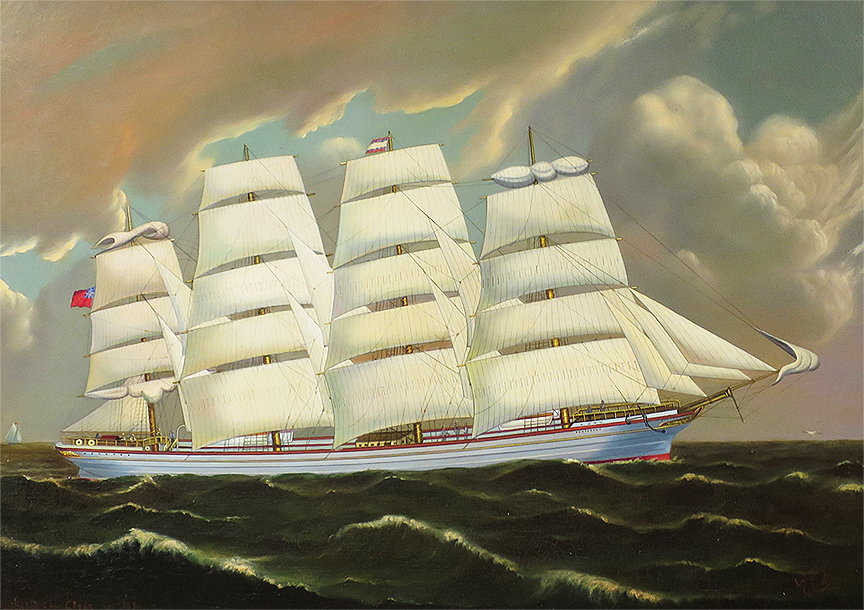 Falls of Clyde (1876) by Lai Fong 5
Falls of Clyde (1876) by Lai Fong 5
Together, these four vessels hold the potential to reinvigorate more than just a single shipyard, with community programmes to build Prince Philip, save Lord Nelson and restore Falls of Clyde creating the platform to inspire students and apprentices alike to become the UK’s next generation of shipbuilders.
All four vessels would be truly sustainable, powered primarily by the wind and with state of the art green technologies available to propel them in situations where the wind is less favourable.
All four vessels would become accessible, approachable ambassadors for our nation, celebrating our past achievements while setting a clear vision for our future.
We’ll get a flagship for business, a flagship for carbon neutral trade, a flagship for developing tomorrows leaders and, perhaps most importantly, we’ll even get a flagship for equality.
A CALL TO ACTION
So, our government could choose to spend £250 million on a single, short term tender in the hope it can increase interest in UK trade and sustain a £5.7 billion shipbuilding industry for decades to come, or they could choose to invest £250 million in boosting the employability of thousands of young people across the UK every year for the next 100 years, developing the key competencies they’ll need to excel in any British industry, all while delivering that welcome boost to the maritime sector and a platform for promoting British trade abroad.
If you believe the governments’ £250m budget should be redirected to the public good through these projects, please write to your MP letting them know why.
If you have a particular interest in making the Sail Training tall ship Prince Philip a reality for our nation and believe you or your organisation could play a key role in supporting the project, please get in touch as soon as possible ‒ Tall Ships Network are forming a working group to establish how this can be achieved with or without the support of our government.
Mia J Pilgrim (she/her)
Director, Tall Ships Network
Email [email protected] or Call (+44)7825 399354
How to write to your MP
https://www.parliament.uk/get-involved/contact-an-mp-or-lord/contact-your-mp/
Sources
1 Via gov.uk on July 28th 2021
2 boatinternational.com
3 Via gov.uk on October 6th 2020
4 michelin.com
5 rolls-royce.com
6 zawya.com
7 timesofoman.com
8 Via bbc.co.uk on July 4th 2010
9 rmg.co.uk
10 jst.org.uk
11 mastcharity.com
12 Young Endeavour
13The Association of Sail Training Organisations
14 royalnavy.mod.uk
Images
Header Cutty Sark Reborn2Sail: http://cutty-sark.org
1 Hoisting the Royal Yard by Bruno Girin (Source / License)
2 Copyright of Tall Ships Network
3 United States Coast Guard Barque Eagle (Source / License)
4 SV Tenacious by Patrick Wernhardt (Source / License)
5 Falls of Clyde (1876) by Lai Fong (Public Domain)
